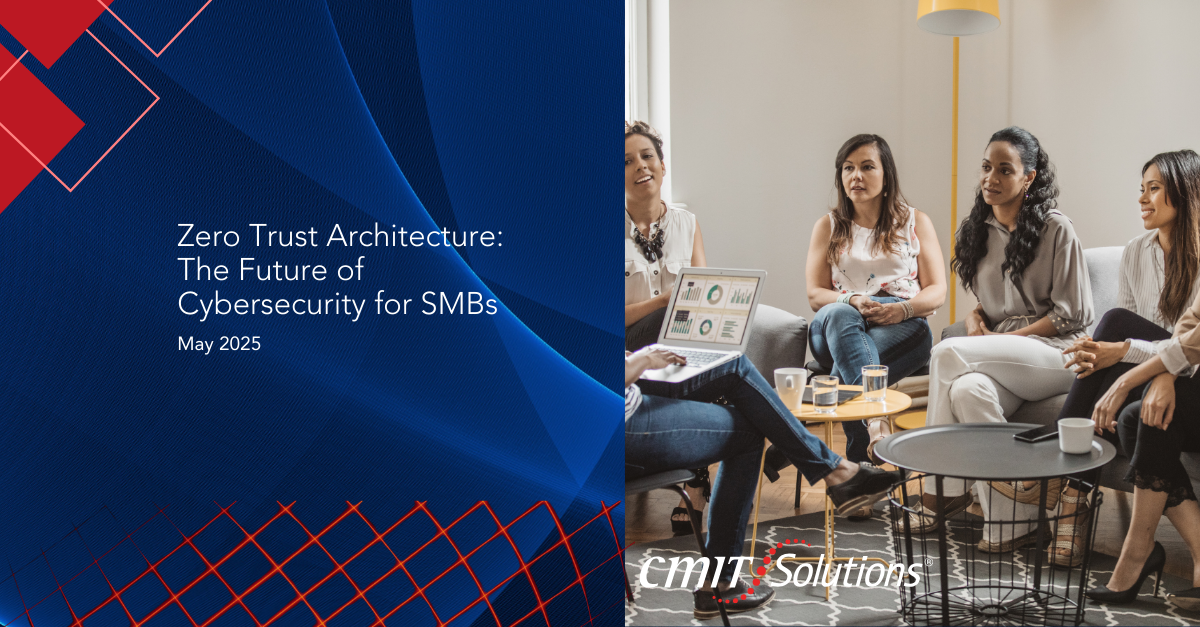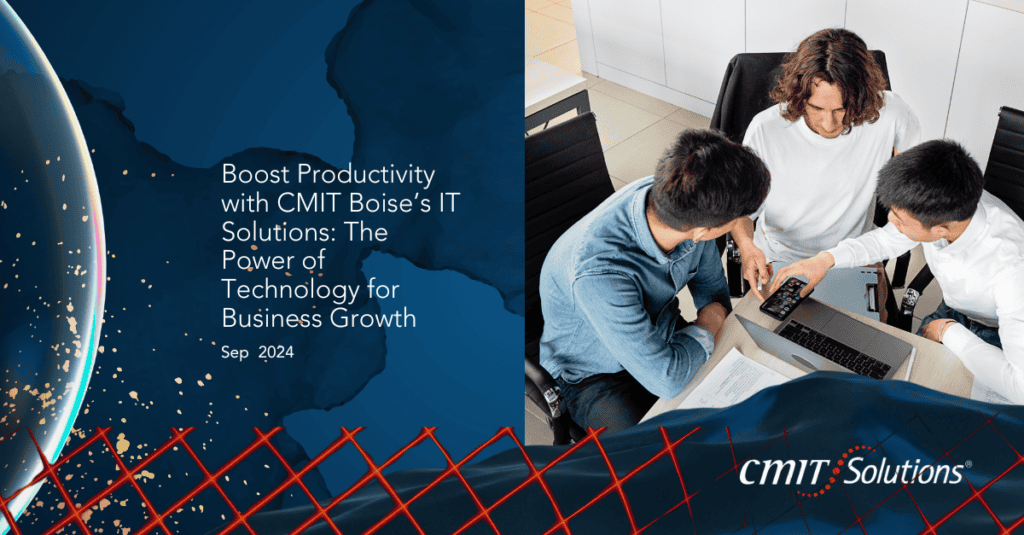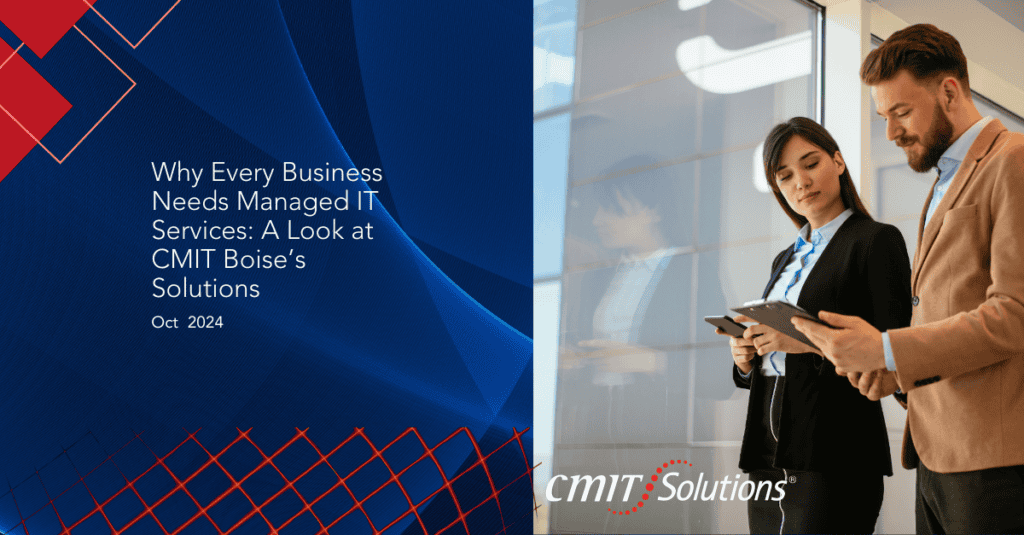In today’s hyperconnected world, traditional perimeter-based cybersecurity models no longer offer sufficient protection. As cyberthreats grow more sophisticated and remote work becomes standard, businesses—especially small and mid-sized ones—need a radically new approach to digital defense. Enter Zero Trust Architecture (ZTA): a security model built on the principle of “never trust, always verify.”
Zero Trust doesn’t just block external attackers; it also addresses the risks of internal compromise, lateral movement, and stolen credentials. It enforces stringent access controls, continuous authentication, and contextual decision-making across your entire digital ecosystem.
For small and mid-sized businesses (SMBs), adopting Zero Trust may seem daunting at first. But the reality is that implementing Zero Trust can drastically improve protection while enabling flexibility and scalability, especially when supported by expert IT partners like CMIT Solutions of Boise.
What Is Zero Trust Architecture?
Zero Trust is a security framework that assumes no user or device is automatically trustworthy, even if they are inside the corporate network. Every access request is verified against multiple variables: identity, device health, geolocation, time, and more. Access is granted on a least-privilege basis—users only get access to what they need and nothing more.
Unlike legacy models that rely on a secure “perimeter” (firewalls, VPNs), Zero Trust protects data and systems by segmenting them and enforcing strict authentication and authorization at every point.
Why SMBs Need Zero Trust Now
Many small business owners believe they’re too small to be targeted by cybercriminals. That assumption is dangerous. Attackers know SMBs are often less protected, making them ideal targets for ransomware, phishing, and data theft.
A recent uptick in remote ransomware attacks, highlighted in CMIT Solutions of Boise’s coverage, underscores the urgency for SMBs to transition from outdated defense models to a Zero Trust strategy.
The reality is that every SMB now operates in a threat-rich environment, whether dealing with remote employees, cloud apps, IoT devices, or third-party vendors. Zero Trust addresses this risk head-on.
The Core Pillars of Zero Trust
Zero Trust is more than a single tool—it’s a comprehensive framework built around several foundational components:
1. User Verification
Every user must authenticate before accessing resources, often using multi-factor authentication (MFA), behavioral analytics, and continuous monitoring.
2. Device Authentication
Not just users, but the devices they use are evaluated for compliance and risk before access is allowed.
3. Least Privilege Access
Users are granted the minimum level of access required to perform their jobs—nothing more.
4. Micro-Segmentation
Your network is divided into small zones, ensuring that even if attackers breach one area, they cannot move laterally.
5. Real-Time Monitoring and Analytics
Continuous evaluation of behavior helps detect anomalies and take action before damage occurs.
These principles make ZTA one of the most robust defenses against modern cyberthreats.
How Zero Trust Supports Business Growth
Far from restricting operations, Zero Trust can actually empower small businesses to grow securely. For instance, with Zero Trust in place, businesses can confidently expand into remote work, cloud adoption, or third-party collaborations—all without compromising security.
CMIT Solutions of Boise has helped numerous SMBs leverage technology to enhance efficiency and growth. Zero Trust fits naturally into this equation by allowing businesses to scale securely.
Whether you’re adding new employees, integrating external vendors, or deploying new digital tools, Zero Trust ensures that only the right people, with the right devices, get access at the right time.
Zero Trust in Action: Real-World SMB Scenarios
Let’s take a closer look at how Zero Trust protects businesses in practical scenarios:
Scenario 1: Onboarding a Remote Employee
Instead of trusting a new hire’s laptop by default, the system checks its security posture (e.g., is antivirus installed?), applies MFA, and restricts access to only the tools necessary for their role. Their access can be revoked instantly if risks are detected.
Scenario 2: Preventing Internal Misuse
Zero Trust ensures that employees in accounting can’t access HR files or development tools unless specifically authorized. If someone attempts to escalate privileges or access restricted data, the system flags it in real time.
Scenario 3: Blocking Malicious USB Devices
Unauthorized devices, like USB sticks, can be a massive threat. CMIT Boise explores this in their post on removable media risks. A Zero Trust framework prevents data exfiltration and malware installation by automatically blocking unverified devices.
The Role of Managed IT Services in Zero Trust Implementation
Implementing Zero Trust is not a one-time project—it requires continuous monitoring, regular updates, and expert oversight. That’s where Managed IT Services come in.
With a partner like CMIT Solutions of Boise, you benefit from:
- Expert planning and Zero Trust roadmap development
- Centralized user and device management
- Real-time threat detection and response
- Continuous system monitoring and patching
- Compliance alignment for industries with strict regulations
Their approach integrates Zero Trust principles into every layer of your IT environment—ensuring security isn’t an afterthought but a core strategy.
Integrating Zero Trust with Existing IT Infrastructure
A common misconception is that Zero Trust requires completely rebuilding your IT environment. In reality, it builds upon your current systems, including your cloud services, on-premises infrastructure, and communication tools.
For example, your unified communications platforms—email, chat, video—can be secured using Zero Trust principles. CMIT Solutions of Boise helps businesses deploy secure collaboration platforms that authenticate every access attempt and encrypt every message.
Your cloud environments can also benefit, as cloud computing becomes the foundation of modern business. By verifying each access request in real-time, you reduce your attack surface significantly.
Data Protection and Backup: A Must-Have for Zero Trust
Even with Zero Trust in place, accidents and attacks can still happen. That’s why secure data backup and disaster recovery solutions are essential.
With CMIT Boise’s data protection services, businesses can ensure that critical data is encrypted, regularly backed up, and quickly restorable—minimizing downtime and disruption.
Zero Trust complements this strategy by reducing the chance of unauthorized access to these backups.
Compliance Readiness with Zero Trust
With data privacy regulations tightening globally, from GDPR to new 2025 U.S. data standards, compliance is a growing concern. CMIT Solutions of Boise ensures your IT systems are audit-ready, aligning Zero Trust practices with compliance requirements.
By tracking user behavior, enforcing encryption, and limiting data access, Zero Trust provides a strong foundation for proving due diligence and meeting legal standards.
Future-Proofing Your Business with AI and Zero Trust
Looking ahead, AI will play a bigger role in threat detection and risk mitigation. AI-driven analytics can evaluate login attempts, flag risky behavior, and automate security responses in real-time.
In their blog on AI in field services, CMIT Boise illustrates how intelligent automation is reshaping operations—and the same principles apply to cybersecurity.
Combining Zero Trust with AI enhances threat intelligence, making your security not just reactive, but predictive.
Strategic IT Guidance for Long-Term Security
Adopting Zero Trust requires long-term vision. It’s not just about technology—it’s about reshaping your business culture to prioritize security and resilience.
CMIT Solutions of Boise offers strategic IT guidance to help businesses align technology investments with growth goals. They ensure your cybersecurity investments pay off in productivity, efficiency, and peace of mind.
Conclusion: Make Zero Trust Your Next Business Move
The digital threat landscape is evolving—and fast. In this new environment, trusting users and devices by default is no longer an option. Zero Trust is the future of cybersecurity, and for SMBs, it’s the smartest way to secure data, operations, and customer relationships.
While Zero Trust might sound complex, you don’t have to navigate it alone. With the expertise of CMIT Solutions of Boise, you can implement a tailored Zero Trust strategy that fits your infrastructure, budget, and business goals.
Now is the time to act. Don’t wait for a breach to realize the importance of modern cybersecurity. Choose Zero Trust. Choose resilience. Choose growth—with confidence.






